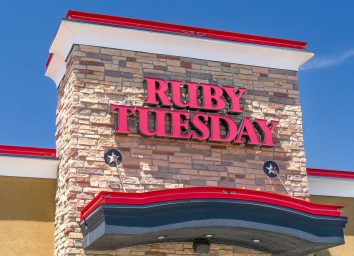This Is Why Your Favorite Local Ice Cream Shop Might Not Survive

There really is nothing quite like a trip to your local ice cream shop. On a summer day, indulging in some scoops of homemade ice cream with your loved ones from a place that seems to never change is a comfort—truly one of life's little joys. But during a pandemic, ice cream shops have sadly taken a huge hit, having to cut employees' pay and in some cases, lay off staff members. And it's unclear if these beloved establishments will be able to survive.
Even now, as more cities are reopening, it's not easy for ice cream shops to bounce back.
So why is it that ice cream shops might not be able to recover?
First things first: when you think of takeout food, ice cream isn't necessarily what comes to mind. Most of the time, an ice cream sundae or milkshake is meant to be eaten right after it's made. It gets scooped up, dressed with all the toppings, and goes right into the customer's hands. If ice cream has to travel a bit to a customer, by the time it gets to their door, it's starting to melt and the sundae is, well, a mess.
Making orders ahead of time for pickup isn't really the easiest either for the same reasons—ice cream is meant to be ordered and eaten right away. So while many restaurants have been able to turn to takeout to keep business afloat, the same can't be said for ice cream shops.
"The ability for ice cream store owners to keep up in a way that is both legally mandated and accepted by the community has been a struggle," Steve Christensen, executive director of the National Ice Cream Retailers Association said in an interview. "Many shops are working twice as hard for half as much."
Many ice cream shops don't necessarily have a drive-thru either, which is another way they haven't really been able to take full advantage of services other fast-food establishments and restaurants have been able to. Certain locations have adopted a walk-up window style of ordering, but part of what makes going to get ice cream a complete experience is sitting and hanging out in the shop itself. With that novelty aspect taken away, it's easy to see foot traffic decrease even more. Plus, the size of ice cream shops is usually much smaller than a typical sit-down restaurant. So when you have to already limit the number of people allowed inside at one time and practice social distancing, it's easy to see why this is all such a struggle for smaller, locally-owned specialty spots.
While many shops are trying to adapt, it's also getting more expensive. Ice cream shops are doing what they can, offering up more to-go options, but these new packaging methods and containers better suited for delivery cost more. And some shops that don't make their own ice cream, according to Christensen, have to buy the ice cream they serve in pint and quart containers instead of the big tubs. Those bigger tubs that they typically have on display and scoop out of to customers who walk in and order overall cost less than buying the smaller options.
Time will tell to see how local ice cream shops will fare, but if you can, still try to pay these beloved locations a visit now that the weather is getting warmer. After all, even during a tough time like everyone is experiencing right now, ice cream can still bring a smile to just about anyone's face.








